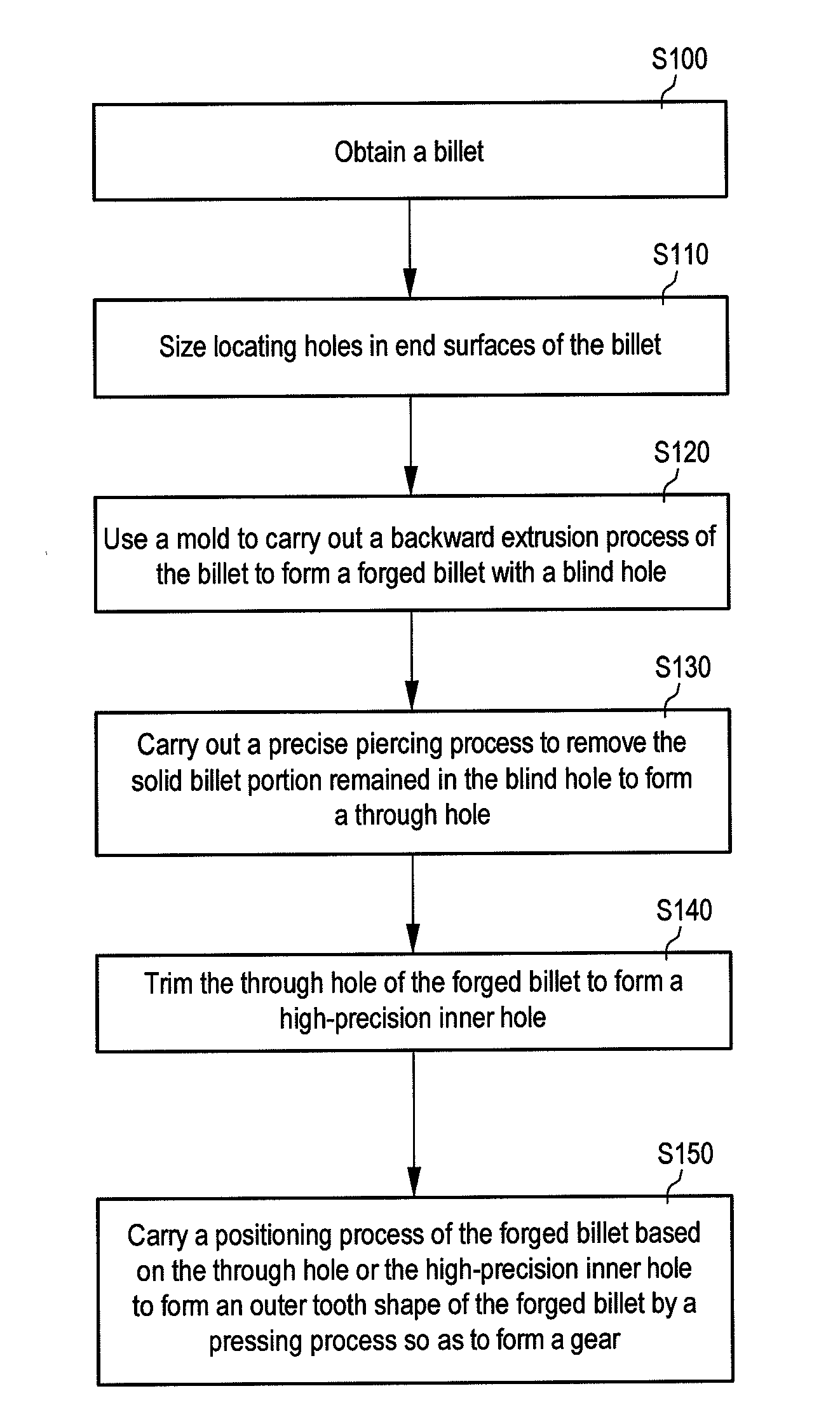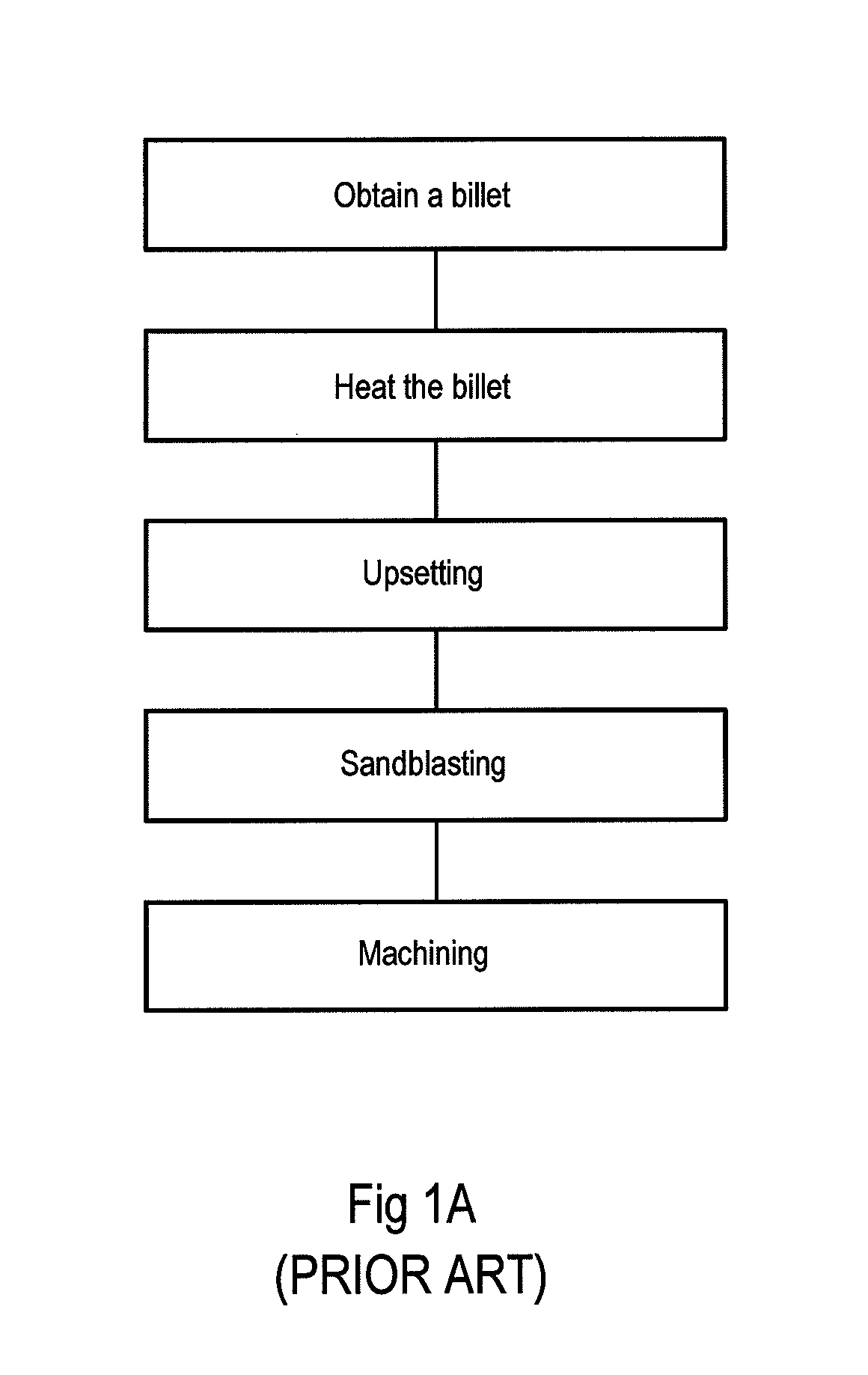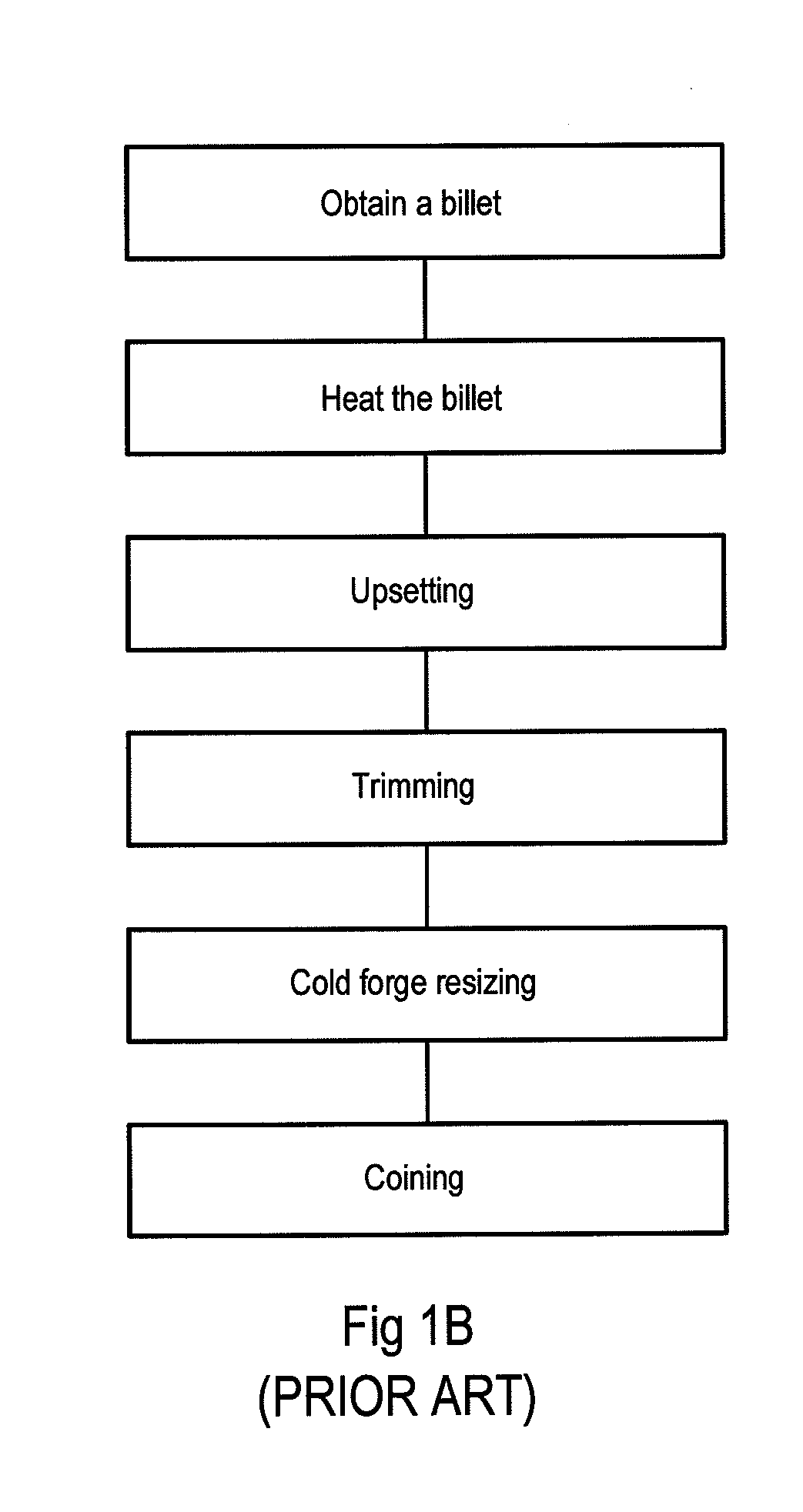Method for forming a gear
a gear and gear technology, applied in the field of gear formation, can solve the problems of poor precision, surface decarburization, and difficult control of final gear roughness, and achieve the effects of reducing the number of times the mold is used in mass production, reducing the chance of mold collapse, and reducing the loading of the mold during formation
- Summary
- Abstract
- Description
- Claims
- Application Information
AI Technical Summary
Benefits of technology
Problems solved by technology
Method used
Image
Examples
Embodiment Construction
[0031]Referring first to FIG. 2, which shows a flow chart depicting a gear progressive cold forging forming method according to an embodiment of the present invention, and steps in the formation of the gear comprise steps as follows:
[0032]A billet 10 is obtained, and the billet 10 used in general forging of gears is rod-shaped metallic material, such as carbon steel, and the rod-shaped metallic material is cut to an appropriate length to serve as the billet 10 waiting to be machined (Step S100). Please also refer to FIG. 3A depicting a schematic structural view of a billet according to an embodiment of the present invention.
[0033]Two locating holes 11 are respectively sized in two end surfaces of the billet 10 where is vertical to axial direction of the billet 10 (Step S110), such that the billet 10 can be fixed in the correct position of a forming mold of the processing equipment. Referring to FIG. 3B and FIG. 3C, which show schematic structural views depicting the steps of sizing ...
PUM
| Property | Measurement | Unit |
|---|---|---|
| axial length | aaaaa | aaaaa |
| radial length | aaaaa | aaaaa |
| thickness | aaaaa | aaaaa |
Abstract
Description
Claims
Application Information
 Login to View More
Login to View More - R&D
- Intellectual Property
- Life Sciences
- Materials
- Tech Scout
- Unparalleled Data Quality
- Higher Quality Content
- 60% Fewer Hallucinations
Browse by: Latest US Patents, China's latest patents, Technical Efficacy Thesaurus, Application Domain, Technology Topic, Popular Technical Reports.
© 2025 PatSnap. All rights reserved.Legal|Privacy policy|Modern Slavery Act Transparency Statement|Sitemap|About US| Contact US: help@patsnap.com



